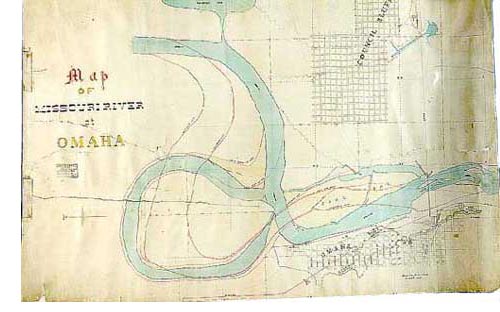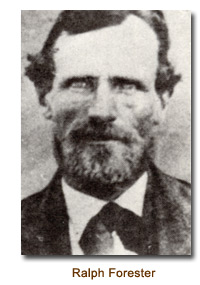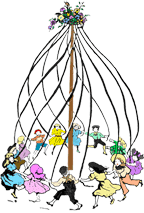Stories of Early Cache Valley
Emigrant Aides
Part of the history of Mendon in Cache Valley contains the story of how four yoke of oxen, a wagon and teamster, or “bull whacker” to make the journey to Omaha, were asked for by the heads of the L.D.S. (Mormon) church. The wagon was sent in charge of Amenzo W. Baker as teamster. His trip took six months for a journey of 2,000 miles. Two wagons drawn by eight yoke of oxen, with Peter Larsen and Isaac Sorensen in charge, negotiated the plains trail. Similarly Ralph Forester and Jasper Lemon went back with their outfits during 1863. Others going with their wagons and oxen were; Albert M Baker, Joseph H. Richards, Charles Bird, Jacob Sorensen and Joseph Hancock between the years 1863-66. As the Union Pacific railroad by 1867 extended some miles west beyond Omaha, the emigrants were able to book rail passage farther and the pioneer wagon outfits going out from Utah did not have so far to go to meet them. By 1869 the nation was spanned by a transcontinental railroad, and travel of emigrants by prairie schooners was virtually at an end.
First Pioneer Fete
Some early day pioneer records of Cache Valley records incidents marking the first observance of Pioneer Day in Cache Valley. Brigham Young and the original band on Mormon pioneers arrived in the valley of the Great Salt Lake July 24, 1847. This has since been regarded as Utah’s natal day and generally observed throughout the state as Pioneer Day. On July 24, 1859 such a fete was held in Cache Valley. It was not long after the arrival of the first settlers in the valley who established permanent homes. Wellsville was the setting for this pioneer fiesta. One of the major attractions was a big feast. Pies were made from berries gathered in the mountains, several choice beeves were slaughtered, and there were many other pioneer delicacies characteristic of the rough and ready west spread out as food for those in attendance. Indians from the outlying country poured into Wellsville, and joined in the fete. They were fed at a second table. Dancing under a dirt floor bowery was another feature of this celebration. Mendon singers for a number of years were accustomed to sing a song composed by Isaac Sorensen, father of Prof. A. N. Sorensen of the Utah State Agricultural College. It was called “The Glorious Twenty–Fourth.” The words ran:
1. We hail the glorious Twenty Fourth its mem’ry ever dear
The day when first the pioneers in Salt Lake did appear;
With Brigham Young their leader across the mighty plains,
They marched with spirits eager the valleys to obtain.
2. They could no longer tarry in land of tyranny
Where liberty and freedom in ev’ry heart should be;
So out into the desert they hurled this little band
Triumphantly they shouted we’ve cleared them from our land.
3. But lo! in Salt Lake Valley a refuge soon they found
Where all the Saints could rally all at the trumpet's sound;
from ev’ry land and nation now see them gather home
to this our mountain station to peaceful vales to roam.
4. And now behold our city in splendor and in fame,
Oh mob where is your pity your lot is endless shame;
You drove us from our dwellings but yet with spirits gay
we celebrate the mem’ry of this eventful day.
Chorus
So! We hail the glorious Twenty Fourth! Its mem’ry ever dear,
The day when first the pioneers in Salt Lake did appear!
United Order Life 
A plan whereby settlers of early Utah, and other communities of the early west inhabited by Later-day Saints (Mormons) should own property in common was carried out to some extent in Cache Valley for a time. This was known as “The United Order.” Such community life was developed for example Mendon by the pioneers, and what Mendon did was typical of other settlements in the Valley. Mendon’s United Order Life started in 1874. Apostle Lorenzo Snow was sent by the church authorities to Logan to hold a meeting with members of the church, and acquaint them with the new United Order phase of activity. When Mr. Forester, then acting bishop of the Mendon wards of the church informed Mr. Snow that his community could not go into the order until Bishop Hughes of Mendon returned from his mission, Apostle Snow queried, “Does the Kingdom of God have to stop in Mendon because Bishop Hughes is on his mission.”
Apostle Snow had his way, and Mendon had the United Order. Its organization was on a basis of election of a president, two vice-presidents, secretary, assistant treasurer, and 11 directors, all elected by the people. All of the real property belonging to each member became then common property held in trust by the order as a whole. Early settlers of Mendon were divided as to the United Order plan so that at first about one third only of their number joined the new economic organization. Companies of ten were formed among the organization membership with a captain at the head of each one. Every member took it on himself to care for the property he had turned over to the order—such as feeding livestock, irrigating and harvesting crops. He was allowed to keep so much for his family’s needs. Records of labor were paid such that one received his pay only for days that he worked during harvest of at other times and not according to how much land or other property he had turned over to the officers of the order. This United Order plan was carried on for but a little more than a year, when the old plan of each individual owing and developing his own property was reinstated. During the winter of 1875 according to records of early Mendon most of the members of the United Order were kept busy cutting logs in Paradise Canyon, most of which they hauled to Ogden in form of lumber. When the order was disbanded in the fall following, the proceeds from the logging operations and the crop harvest were divided and each man was given his fair share of the proceeds. The United Order in Mendon was then over.1
![]()
![]()
1. Russell Hess, Stories of Early Cache Valley, newspaper text. Paper and date not listed on this clipping.
